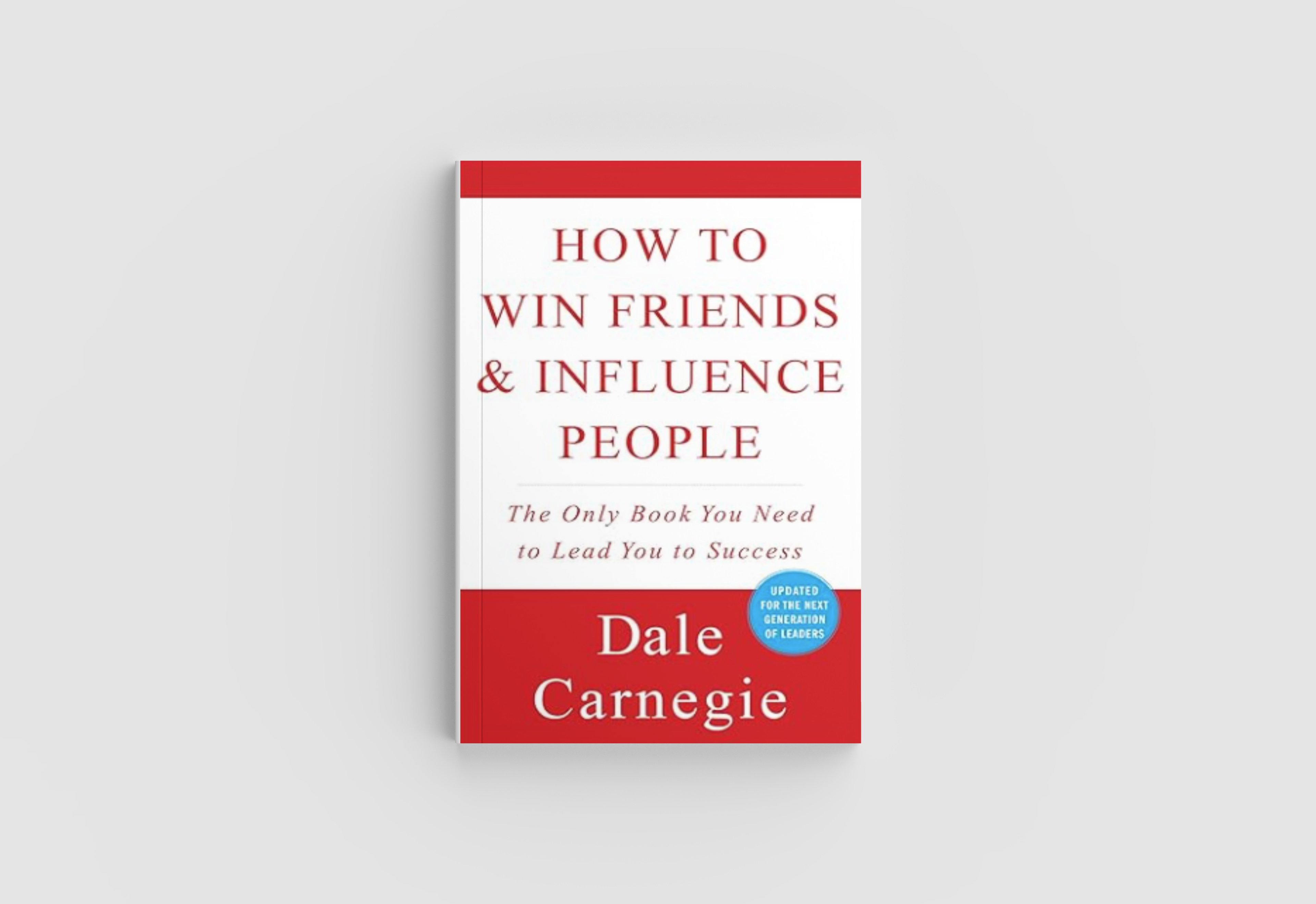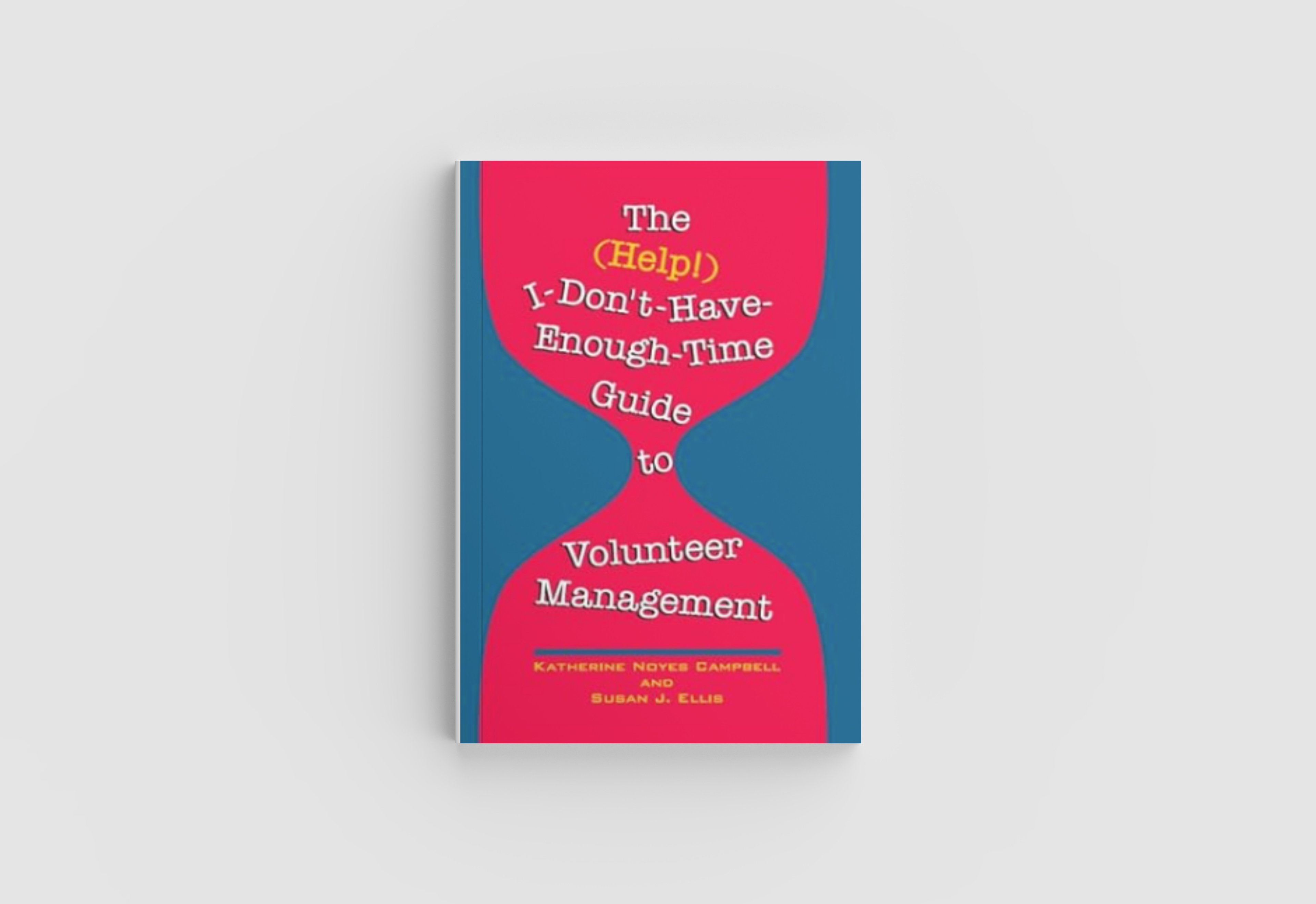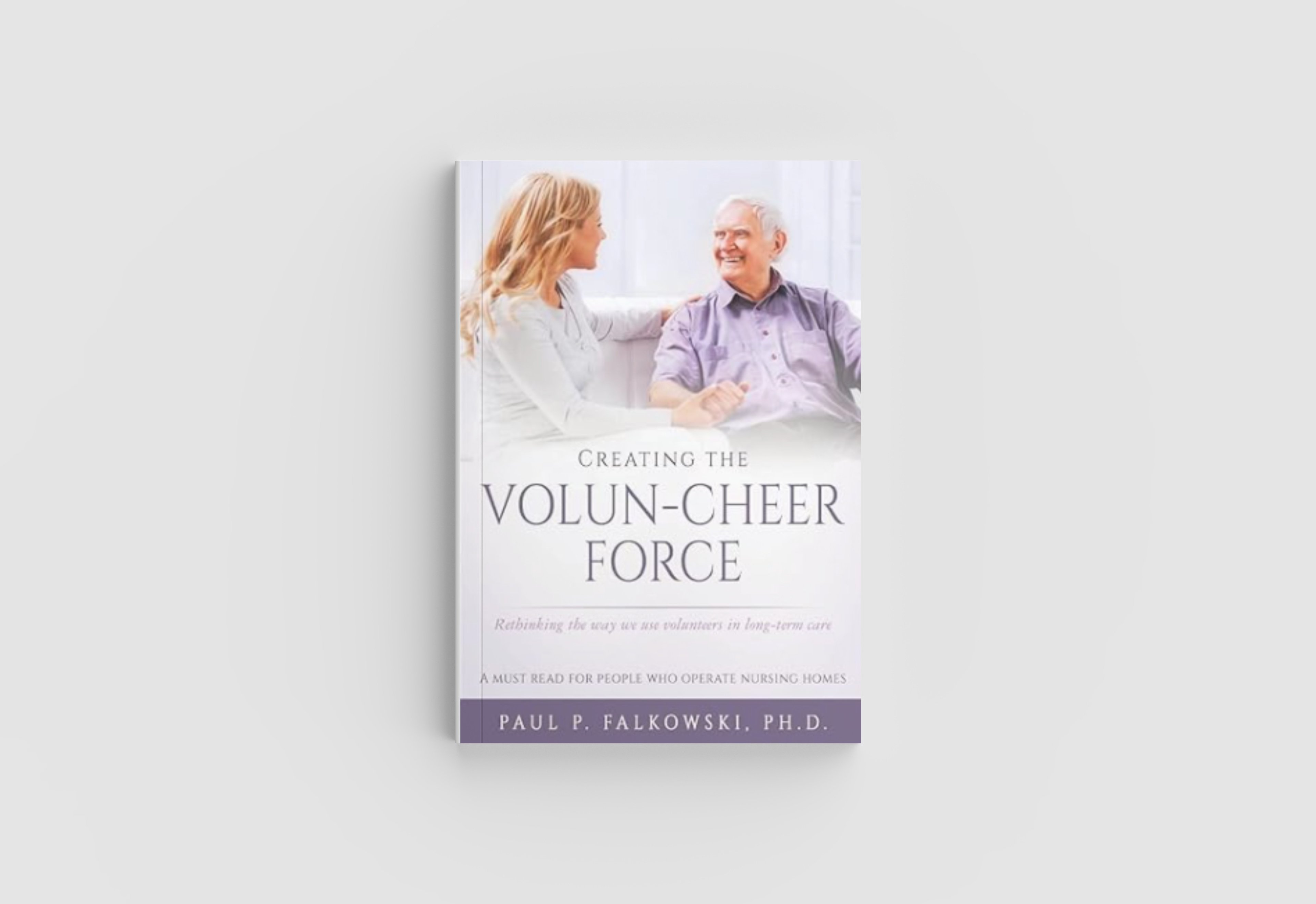BETTER IMPACT BOOK BITES - The (Help!) I-Don't-Have-Enough-Time Guide
This Month’s Selection: The (Help!) I-Don't-Have-Enough-Time Guide to Volunteer Management By Katherine H. Campbell, CVA & Susan J. Ellis The fifth...

This Month’s Selection: How To Win Friends & Influence People
By Dale Carnegie
The sixth in a series of Better Impact Book Bites
A taste of great books worth consuming.
Originally published in 1936, this title has stood the test of time. Revisions keep it relevant and connected to each decade since. Those who’ve read it typically have good feedback and encourage others to pick it up. I did not research Dale Carnegie before beginning (the life of a volunteer engagement pro is busy), but I think his words stood well on their own. You’ll find he spent 15 years doing the research that created the four-part methods to win and influence.
The first time I ran into this title I couldn’t decide if it was for me until I listened to the “Speaking to Influence” podcast with Dr. Laura Sicola. She had on guest Mitzi Perdue. Mitzi’s call to action was to read this book and so I did. In my pursuit to bring you interesting reviews, I surveyed my network to help me pick one of my previous reads as the newest #BookBites and Gretchen Jordan, Association Manager for the Association of Leaders in Volunteer Engagement, picked this one. At 250 pages this isn’t a quick read, but it’s an easy one. The language has been relaxed over the years so it feels natural, but there may be phrases you reread to make sure you understand. For example: “My popularity, my happiness and sense of worth depend to no small extent upon my skill in dealing with people.”
Many of the principles featured in the book are ones I use to build my professional brand online and in person. At events, people comment about their connection to me on social media and how much they enjoy my posts and book reviews. Even though it’s our first time meeting, they say they “feel like they know me.” These are wonderful conversations to have with people who share similar interests and professional goals. I bet Dale Carnegie would not be surprised his tactics would translate so well to the social media world. Creating a professional persona comes with the need for brand management and boundary setting, but that’s a different book. If you are working on relating to people and building a network of supporters – keep reading.
This is a great read for someone who identifies as a “people person” because it spotlights the truths about human nature and how we relate to one another. For example, page 13, “When dealing with people, let us remember we are not dealing with creatures of logic. We are dealing with creatures of emotion, creatures bristling with prejudices and motivated by pride and vanity.” If you’re not a “people person” and want to prove there are valid reasons why, this book can do that too. Carnegie will try to convince you to not condemn the vain and prideful but instead to try to understand them.

This book talks about the benefits of self-analysis, like asking yourself the tough questions and tracking results weekly. By nature, I am not an analytical person but if you know someone on a self-discovery mission or is going into a large new workplace, they may appreciate the direction from this title. It also touches on the benefits of self-education – a win-win for someone interested in self-improvement and professional development.
“The only way I can get you to do anything is by giving you what you want.” The beginning of Chapter Two opens the dialogue about human nature and the “desire to be important” or the “desire to be great.” In the world of volunteer engagement, I connect this to motivation matching for our volunteers. What do they want from their volunteer experience? What happens when they don’t know? Does the volunteer engagement pro (VEP) give up? Instead, we should work with the individual to figure out their true motivation and then match it to an opportunity or refer them to another organization that would offer that experience. When we have volunteers who can’t quite express what they’re looking for, it’s okay to give in and help find their “feeling of importance.” The discovery period when someone first comes to volunteer at your organization can be an exciting time. I believe there is a place to serve for everyone and sometimes the volunteer manager is a light on the path to their perfect service match.
“Carnegie praised his associates publicly as well as privately.” I am a big fan of public displays of support and encouragement. If you follow me on social media, you’ll see I spotlight and share successes from the global field of volunteer engagement. Carnegie encourages sending one-on-one communications to those who may not desire the limelight. I look forward to an email with an update of a CVA’s wins or their achievements. In the certificate program I lead, the room buzzes with love for handwritten thank you notes and words of encouragement as a way of feeling recognized by leadership. If you’d like to recognize a volunteer, staff member, or colleague, find out if they’d like the stage or the balcony for your praises. A common thread in online VEP groups is to ask what gift to purchase for volunteer recognition. We should ask our volunteers what is most meaningful and see what examples come back.
“There is nothing I need so much as nourishment for my self-esteem.” Sometimes volunteer managers run into the trap of saving appreciation for National Volunteer Month. How long is too long to wait between recognizing a volunteer or staff member for the amazing work they’re doing? We know volunteers show up because they have heart for our missions, but who doesn’t love a regular reminder they make an impact? I need to do a better job of this myself. I love the idea of “leave a friendly trail of little sparks of gratitude on your daily trips.” I know departments of one struggle with creating the time to have a variety of appreciation strategies. Over time they find it’s well worth the effort but challenging to implement alone. How do you communicate thanks on a regular basis?
This is the next principle of the book. I know VEPs are superb operators at this principle but sometimes it takes time to understand the culture of appreciation at the organizational level. Once comfortable in our position, we can make moves to improve or realign the way appreciation is given to volunteers and staff who work with volunteers. When all we count is volunteer hours, that ties us to equating hours to the highest value. Maybe a volunteer does not have the most hours, hasn’t been with us long, or missed a shift without calling in, but they can still be the next rising star and deserving of appreciation.
“If there is any one secret of success,” said Henry Ford, “it lies in the ability to get the other person’s point of view and see things from that person’s angle as well as from your own.” When I read about a VEP having a difficult time recruiting volunteers I think about methods to drum up interest. It’s hard for me not knowing their potential volunteer base to try and guess what their community is like. We have to think of the point of view of a potential volunteer. How does our marketing make them feel? Are we sending out a meaningful message that is clear and concise to why we are seeking volunteer support? We will never know the perception people have about our organization until we start having real touch points with potential audiences and asking for feedback. During interviews with potential volunteers, I try to find the gap volunteer service will fill in their lives. I am helping them solve a problem and if I do it well, they will stay and have a deeper and more meaningful experience. I find interviewing volunteers who don’t have an immediate connection to the organization or don’t find an opportunity that speaks to them, will benefit most from personalized matching. It’s worth the time to think about the entire onboarding experience from their perspective and carefully craft their match. “People who can put themselves in the place of other people, who can understand the workings of their minds, need never worry about what the future has in store for them.”
This is the next principle and it came with a short discussion on self-expression. What an interesting connection! The VEP tends to carry pom-poms in their back pocket because they are expected to cheerlead for the volunteer program at any moment. It can be exhausting to be the only one drumming up excitement for engaging volunteers and trying to constantly prove why our paid role is important. How can we relieve pressure and encourage others in our organization to take up the mantle too? How can we make them want to get involved in the volunteer side of the organization on their own? Read this chapter and let me know if any of these tips would help your program.
“You have to be interested in people if you want to be a successful writer of stories.” We spend hours trying to convey the impact of the volunteer program to our leadership, and we spend the year creating content that spotlights our volunteers. That’s good. Someone has to be interested in our people in order to get the data, testimonials, and emotions that come with service. The following pages talked about people who were master showmen and had a genuine interest in their audience. That combination made them wildly successful. We do have to practice our craft as leaders of volunteers. I practice interview questions, how to have dialogue over the phone, and trainings I’m going to coach other VEPs through difficult conversations they’ll have with volunteers. On my toughest days I know it’s important to “turn it on” for my audience, and it pays off. We’ve all run into the volunteer coordinator who does not care about their volunteers, who makes no extra effort to foster a sense of excitement about the volunteer program. We know they will eventually move on to a different field, but the damage to the program will already be done.
“It isn’t what you have or who you are or where you are or what you are doing that makes you happy or unhappy. It is what you think about it.” We often have to flex our mental toughness as leaders of volunteers in the workplace. When we have a rough day, we decide if we will do this job again and again. Complaints I receive from VEPs are about not being brought “to the table” or having their role buried within the organizational chart to the point they have zero decision-making ability. What can be done? It’s a challenge when we take on toxic organizations or anti-volunteer cultures. I see brave professionals who continue to fight for their position and their volunteers, as well as the impact a well-run volunteer program can have on the mission (“Well-run” means employing a paid leader of volunteers to strategize, make decisions, and mobilize resources). If we believe and change our attitude, we will have a much better experience. I stopped worrying about “the table” and built a stage for volunteers and myself and opened seats in the audience to anyone who wants to come watch. It can feel like a lonely place, but then someone took a seat, so I’ve remained doing this work again and again.
“Jim Farley discovered early in life that the average person is more interested in his or her own name than in all the other names on earth put together.” I think the marketing world knows this and if social media platforms could insert our names on every post to get our attention, I bet they would. I train on this idea when I talk about internal marketing for volunteer programs. I share the tip of participating in other areas of the organization and listening to what’s going on, without talking about ourselves or the volunteer program. Personal letters, mailings, phone calls, and chance meetings with an individual where the spotlight is on them and not us, goes a long way. “Franklin D. Roosevelt knew one of the simplest, most obvious and most important ways of gaining good will was by remembering names and making people feel important.” We should do this more and take up the challenge. Now I’ve definitely called a Brenda a Barbara and I’ve written Kristin instead of Kristen, but it’s the effort that counts right? When someone calls our name, do our ears not perk up and we turn around excited to see who has recognized the back of our head? Or is that just me? The next principle is “remember that a person’s name is to that person the sweetest and most important sound in any language.”
This is a principle Carnegie wants you to take time to work through. “It takes character and self-control to be understanding and forgiving.” He points out we rarely criticize ourselves, so why do we go out of our way to criticize others? When we do the difficult task of bringing our paid and unpaid workforces together there will naturally be criticism and complaints. Having a mix of ages, cultures, lived experiences, learning differences, and leadership experience should be praised, and we must approach it with a sense of understanding. We will make mistakes, but the more we promote the positive take on our efforts, the more people will believe in our message.
“The way to develop the best that is in a person is by appreciation and encouragement.” As leaders of volunteers we do our best not to forget this one. No one likes to be criticized and it takes a lot of energy to constantly be critical. This book is filled with ways to be “hearty in approbation and lavish in praise.” In our field we know feedback can be a double-edged sword. If we ask for constructive criticism, we are going to get it. In the situations where we can point out people’s flaws, it’s also important to lift up their successes. Volunteers want to do a good job and need support to do so. When we place them under supervision casting a negative light on their efforts, they will leave. Helping staff learn how to show encouragement is an important skill everyone should learn. “Honest appreciation gets results where criticism and ridicule fail.” What are the touch points where volunteers can be told of their good points?
“Flattery seldom works with discerning people. It is shallow, selfish, and insincere.” Carnegie isn’t saying to blow things out of proportion or pour on the scripts. The book describes the difference between appreciation (sincere) and flattery (insincere). I, myself, wrestle with the level of praise to apply to the volunteer program. I roll my eyes at the constant “hearts and hands” mantras we grew up with and am looking for something more meaningful. I never want to be insincere in how I describe the work of volunteers. However, as leaders of volunteers, it is our daily operation to feel the impact that comes from the results of the efforts of this massive workforce. The minute we start to lose sincerity around that is the time for us to take a few days off and regroup. Finding new ways to describe impact and appreciate volunteers helps keep any worries about insincerity at bay. I love when a fellow VEP asks, “What’s another way to say this?” or “I want my organization to use new language around volunteerism. What do you recommend?” It shows an interest in being real. Flattery is cheap, volunteers are priceless, right?
“So, the only way on earth to influence other people is to talk about what they want and show them how to get it.” Those with volunteer engagement training are often taught to stop making the call to action about the needs of the organization only. We should consider the desires of the volunteer that attracted them to our cause in the first place. Match their motivation instead of plugging them arbitrarily into where we need them. If we don’t know what our target audience of potential volunteers wants, then they’re not our target audience. We must do fact finding and speak with our potential volunteers to learn about what they would like to receive from their volunteer experience. It could be job skills, comradery, leadership training and more. “Every act you have ever performed since the day you were born was performed because you wanted something.” I agree. I write these reviews because I want to chat with other VEPs about books, which will expand my network. When I think about influencing people, it’s not about what I want but I’m leveraging what my audience wants, so in the end we are both supporting a common interest. I see it as a win-win.
“You knew by some divine instinct that you can make more friends in two months by becoming genuinely interested in other people than you can in two years by trying to get other people interested in you.” What I love about the field of volunteer engagement and my participation in different groups is there is difference among us. To be a well-rounded trainer, I must be prepared for a variety of scenarios that brand new volunteer coordinators in my certificate program will be in. Hearing their stories, listening for similarities and differences from my own experience – but focusing on their goals – is key. Part of taking notice of other professionals and lifting up their voices through social media is a way to show genuine interest in what’s happening in their career. Celebrating successes and sharing in disappointment can tie many of us together. It takes planning and persistence to remain plugged into a network and to create real relationships, but it goes a long way to be part of something strong. It’s not hard to become genuinely interested in other people, but it can feel strange as a working adult. I gravitate to people who share their voices openly. By engaging with them in a candid way about our profession, I find more people come out to join the discussion, and then you have a vibrant story that is not about me or you, but about our shared experience in the field.
“If we want to make friends, let’s put ourselves out to do things for other people – things that require time, energy, unselfishness and thoughtfulness.” I love this tip. I mentioned before that the life of a VEP can feel like a lot of pressure, so how can we be expected to easily make friends especially in a new workplace? For me, I need champions for my work who are in rooms I’m not. I want to be an ally for others as well. The concept of reciprocity is something I train on, and it has so many connections to the work we do. I want to solve problems at my organization. Usually that is by applying the impact of volunteers, but sometimes it’s going above and beyond to help a colleague. “If we want to make friends, let’s greet people with animation and enthusiasm.” I can feel my introverted VEPs out there cringing at this quote, but we all know someone we’re afraid to call up because of their tone or their in-person negativity about our role. Often, we shy away and hide when met with criticism, but we can turn their attitude around through showing the same attention to our work teams as we do our volunteers. The next principle is to become genuinely interested in other people. How have you been able to make friends at work?
“You must have a good time meeting people if you expect them to have a good time meeting you. The effect of a smile is powerful – even when it is unseen.” Most VEPs I meet enjoy being with people. They’re in the people business, so these tips probably make a lot of sense to them. We’ve all walked into a room and got the feeling we were not expected and therefore not wanted. My worst fear is for a volunteer in my program to arrive with no welcome or acknowledgement. Crafting what the volunteer experience will be as someone new enters the life cycle of your volunteer program is something important to think about. If we want them to have a good time, we need to create a positive experience for our staff too. In customer service training, we are told to stand up or smile when on the phone because the person on the other end can hear and feel the difference. There’s also been several viral videos of teachers closing their eyes, taking a deep breath, straightening their shoulders, and putting on a huge smile before entering their classrooms. As a leader, we can begin creating a pro-volunteer culture in our organization by working on these experiences. “Your smile is a messenger of your good will. Your smile brightens the lives of all who see it.” That’s the reason that “smile” is the next principle.
The next principle is “be a good listener. Encourage others to talk about themselves.” The most challenging volunteer interviews are with individuals who don’t give feedback, ask questions, or clarify vague answers. It’s hard to listen when there is limited dialogue. Those situations require the VEP to ramp up their detective skills and try to deduce what has brought this person to service. I wait for those moments, so I can practice not giving up – being persistent and prepared to listen as soon as the potential volunteer feels comfortable enough to speak candidly. “The chronic kicker, even the most violent critic, will frequently soften and be subdued in the presence of a patient, sympathetic listener.” That ties nicely into the following principle, “talk in terms of the other person’s interests.”

This is Principle Six, and it’s a good one. How do we know how to make staff and volunteers feel important within the bubble of our organization? It takes listening, practice, and sincerity. We see turnover when people feel their work is making no impact, when no one acknowledges they bring talent and a unique perspective to the team. All the previous principles rolled together help show someone their importance. For me, when someone asks for advice or shares a story with me, I feel important because they stopped long enough in their day to connect.
It took me a while to get used to admitting I’m wrong the moment it occurs. In college I’d make excuses and not want to hear myself admit a fault. Once I entered the working world of volunteer engagement, I got comfortable. I feel it saves me a lot of time to admit my mistake and begin to make corrections. “There is a certain degree of satisfaction in having the courage to admit one’s errors. It not only clears the air of guilt and defensiveness, but often helps solve the problem created by the error.” I think this helps win friends because people tend to appreciate vulnerability, especially if they have a boss who never admits they are wrong.
This section talks about arguments and that is not my expertise, so I’m not going to tell you to avoid confrontation. One point made is to not immediately mention to someone you think they’re wrong. That’s common sense but Carnegie’s point is to show respect for the other person’s opinions and not judge them by our own principles. Getting ahead of conflict is helpful, but we can’t avoid it within volunteer programs. Bringing so many people together is going to create dialogue and sometimes our most passionate advocates will want their voices to be the loudest in the room. We can train and prepare to handle those moments with care.
The next chapters discuss the tactics of not giving your opponent an opportunity to say no. Instead, working to get them to say yes to something first. You’ll have to read this chapter for the examples but someone with conversation finesse has this skill in their arsenal.
Oftentimes when I read a book, I pause and my age or my place in time offers context. The second 100 pages of the book went over and over how important it is to see something from someone else’s point of view and how asking questions instead of giving direct orders can win over a team. When we praise someone, we should be specific and that is part of appearing sincere and not flattering. “Abilities wither under criticism; they blossom under encouragement.” I’ve been with the same organization almost 15 years, so I’ve only had a few bosses. I think about how the next generation in the workforce is going to want to receive encouragement. For me, a LinkedIn recommendation is a bigger value than a handwritten note, but I’m still old enough to think a phone call feels more genuine than an email.
Since this book came out in 1936 and people are recommending it on podcasts today, I think things haven’t changed all that much. Toward the end of the book, I did a reality check and considered how some of these strategies could be seen as manipulative. If we try these methods with our family versus our colleagues, is it different? “The way to develop self-confidence, he said, is to do the thing you fear to do and get a record of successful experiences behind you.” If we’re working on our people skills, then we need methods to try to improve the way we relate to others. I love feeling influenced by other volunteer engagement professionals because I know they’ve worked hard to gain their expertise, and they probably feel great accomplishment in sharing what they’ve learned. However, I do feel reserved if I get a cold call from someone wanting something from me with little tact on making it sound mutually beneficial. From then to now, there are people who are naturally good at winning friends and influencing people. If we focus on the areas we struggle with, we will see results from a handful of these principles. What are your best tips to relate to others and “win” them over?
Thanks for stopping by this review! I had a great time going back through this book picking out the pieces I connect with as a volunteer engagement professional. I know there is beaucoup of leadership books out there, but this one had vintage advice I have used with great success. I appreciate Better Impact hosting this series and have received great feedback from readers. I write these reviews to support reading as professional development for our profession and would love to hear what’s on your reading list.
My next title will be a volunteer engagement book specific to the world of older adults and senior care services. I went to University for gerontology (the study of aging) and volunteer management, so this title will bring the two together.
Is your Volunteer Organization seeking a better way to save time, money and mitigate risk?
Learn how Better Impact's Top-Rated Volunteer Management Software Solution can help your Volunteer Organization with:
Start your Free Volunteer Management Software Trial Today!
Featured Posts

This Month’s Selection: The (Help!) I-Don't-Have-Enough-Time Guide to Volunteer Management By Katherine H. Campbell, CVA & Susan J. Ellis The fifth...

This Month’s Selection: Creating The Volun-Cheer Force: Rethinking the Way We Use Volunteers in Long-Term Care By Paul P. Falkowski, PH.D. The...

This Month’s Selection: Game On! By Nicole R. Smith The fourth in a series of Better Impact Book BitesA taste of great books worth consuming.